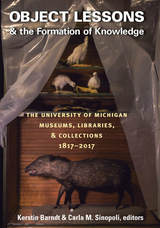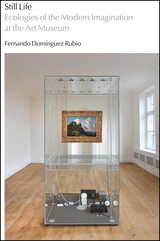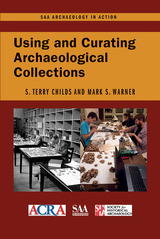6 books about Collection management

Archival Accessioning
Audra Eagle Yun
Society of American Archivists, 2021
An archival accessioning program is the keystone of responsible collection stewardship and essential to providing both equitable access and meaningful contextualization of archives. In Archival Accessioning, editor Audra Eagle Yun approaches the acquisition of materials as a holistically oriented, programmatic activity that establishes and maintains baseline control for archival holdings.
Combining principles, best practice, and real-world examples from eleven archival practitioners, Archival Accessioning is a forward-thinking guide that archivists can apply in a variety of institutional settings. Those working with archives, special collections, and local history materials will learn how to
• Identity core components of archival accessioning and critically analyze such work,
• Establish a thoughtful and successful program for taking intellectual and physical custody of materials, and
• Adapt firsthand professional perspectives to improve or modify existing practices.
This book’s set of principles, applied procedures, and variety of examples will benefit archivists, records managers, and librarians as well as information science students at all levels.
[more]

Extensible Processing for Archives and Special Collections
Reducing Processing Backlogs
Daniel A. Santamaria
American Library Association, 2015

The Library Innovation Toolkit
Ideas, Strategies, and Programs
Anthony Molaro
American Library Association, 2015

Object Lessons and the Formation of Knowledge
The University of Michigan Museums, Libraries, and Collections 1817–2017
Kerstin Barndt and Carla M. Sinopoli, editors
University of Michigan Press, 2017
Object Lessons and the Formation of Knowledge explores the museums, libraries, and special collections of the University of Michigan on its bicentennial. Since its inception, U-M has collected and preserved objects: biological and geological specimens; ethnographic and archaeological artifacts; photographs and artistic works; encyclopedia, textbooks, rare books, and documents; and many other items. These vast collections and libraries testify to an ambitious vision of the research university as a place where knowledge is accumulated, shared, and disseminated through teaching, exhibition, and publication. Today, two hundred years after the university’s founding, museums, libraries, and archives continue to be an important part of U-M, which maintains more than twenty distinct museums, libraries, and collections. Viewed from a historic perspective, they provide a window through which we can explore the transformation of the academy, its public role, and the development of scholarly disciplines over the last two centuries. Even as they speak to important facets of Michigan’s history, many of these collections also remain essential to academic research, knowledge production, and object-based pedagogy. Moreover, the university’s exhibitions and displays attract hundreds of thousands of visitors per year from the campus, regional, and global communities. Beautifully illustrated with color photographs of these world-renowned collections, this book will appeal to readers interested in the history of museums and collections, the formation of academic disciplines, and of course the University of Michigan.
[more]

Still Life
Ecologies of the Modern Imagination at the Art Museum
Fernando Domínguez Rubio
University of Chicago Press, 2020
How do you keep the cracks in Starry Night from spreading? How do you prevent artworks made of hugs or candies from disappearing? How do you render a fading photograph eternal—or should you attempt it at all? These are some of the questions that conservators, curators, registrars, and exhibition designers dealing with contemporary art face on a daily basis. In Still Life, Fernando Domínguez Rubio delves into one of the most important museums of the world, the Museum of Modern Art (MoMA) in New York, to explore the day-to-day dilemmas that museum workers face when the immortal artworks that we see in the exhibition room reveal themselves to be slowly unfolding disasters.
Still Life offers a fascinating and detailed ethnographic account of what it takes to prevent these disasters from happening. Going behind the scenes at MoMA, Domínguez Rubio provides a rare view of the vast technological apparatus—from climatic infrastructures and storage facilities, to conservation labs and machine rooms—and teams of workers—from conservators and engineers to guards and couriers—who fight to hold artworks still.
As MoMA reopens after a massive expansion and rearranging of its space and collections, Still Life not only offers a much-needed account of the spaces, actors, and forms of labor traditionally left out of the main narratives of art, but it also offers a timely meditation on how far we, as a society, are willing to go to keep the things we value from disappearing into oblivion.
Still Life offers a fascinating and detailed ethnographic account of what it takes to prevent these disasters from happening. Going behind the scenes at MoMA, Domínguez Rubio provides a rare view of the vast technological apparatus—from climatic infrastructures and storage facilities, to conservation labs and machine rooms—and teams of workers—from conservators and engineers to guards and couriers—who fight to hold artworks still.
As MoMA reopens after a massive expansion and rearranging of its space and collections, Still Life not only offers a much-needed account of the spaces, actors, and forms of labor traditionally left out of the main narratives of art, but it also offers a timely meditation on how far we, as a society, are willing to go to keep the things we value from disappearing into oblivion.
[more]

Using and Curating Archaeological Collections
S. Terry Childs
University Press of Colorado, 2019
All archaeologists have responsibilities to support the collections they produce, yet budgeting for and managing collections over the length of a project and beyond is not part of most archaeologists’ training. While this book in the SAA Press Archaeology in Action Series highlights major challenges that archaeologists and curators face with regard to collections, it also stresses the values, uses, and benefits of collections. It also demonstrates the continued significance of archaeological collections to the profession, tribes, and the public and provides critical resources for archaeologists to carry out their responsibilities. Many lament that the archaeological record is finite and disappearing. In this context, collections are even more important to preserve for future use, and this book will help all stakeholders do so.
[more]
READERS
Browse our collection.
PUBLISHERS
See BiblioVault's publisher services.
STUDENT SERVICES
Files for college accessibility offices.
UChicago Accessibility Resources
home | accessibility | search | about | contact us
BiblioVault ® 2001 - 2024
The University of Chicago Press









